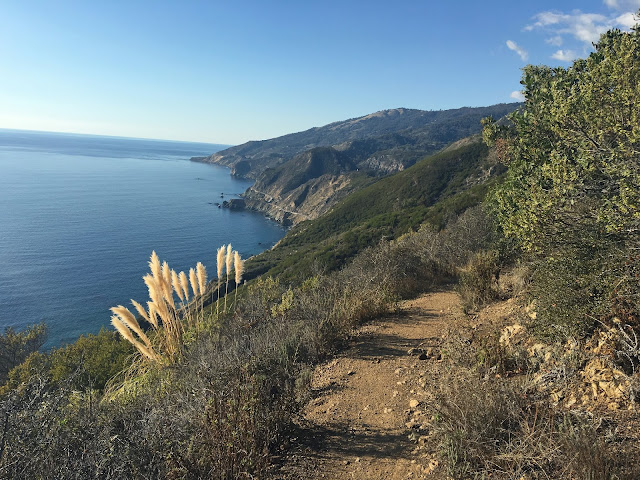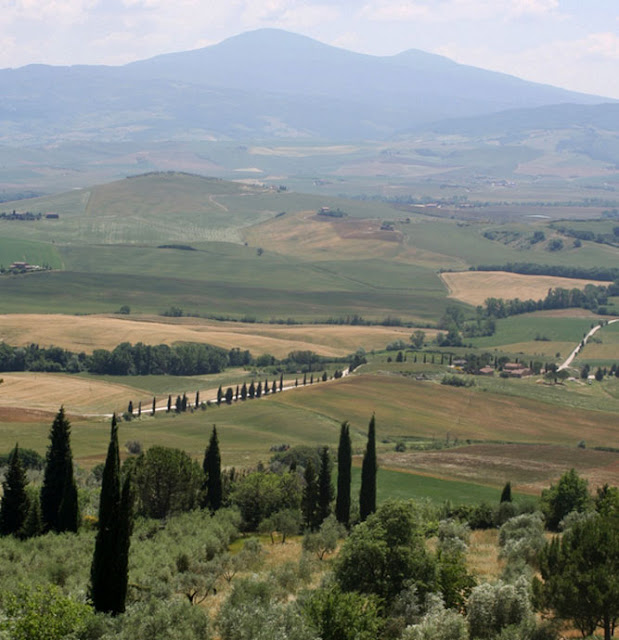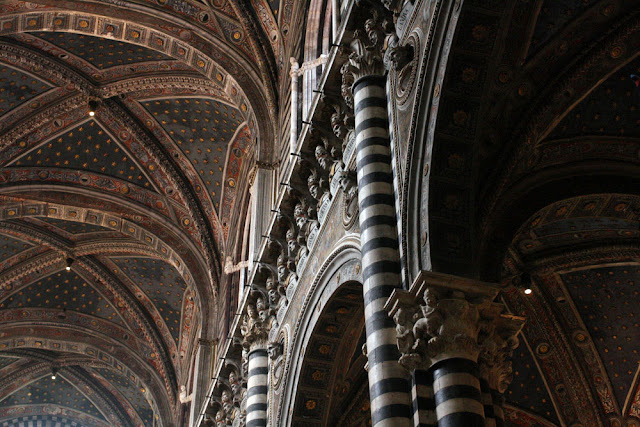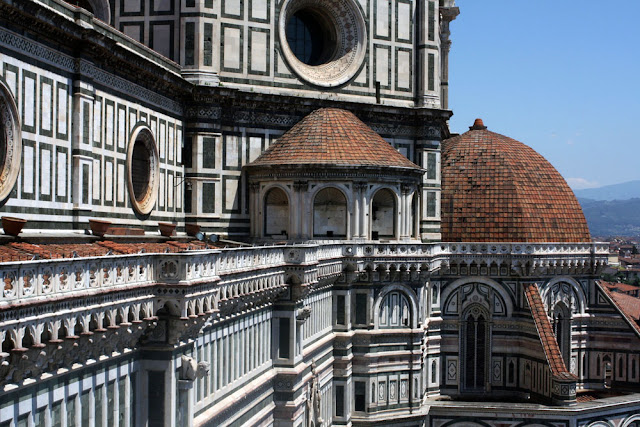For our annual Thanksgiving trip, we camped oceanside in Big Sur.
- Steph
Our first Thanksgiving
November 29, 2015
We hosted our very first holiday dinner in 2015 — a Thanksgiving meal for 10 people. As our dinner took place the weekend before Thanksgiving for our friends, we were free to experiment as we pleased, without the pressure of meeting everyone's holiday expectations. Plus, we usually go camping over Thanksgiving and hadn't eaten an official Thanksgiving dinner in years, which left us feeling unbound by tradition.
We cooked nearly everything from scratch. We also had to buy nearly all the plates and silverware, as we only had four of everything.
Our first Thanksgiving menu
Roast turkey — Alton Brown
Gravy — Alton Brown
Bread salad — Zuni Cafe, with homemade whole wheat bread
Fig cranberry sauce — Kitchn
Green bean salad with fried almonds — Smitten Kitchen
Maple coriander roasted carrots — Date Night In
Roast butternut squash and red onion — Ottolenghi (brought by a guest)
Kale salad with pomegranate seeds — Epicurious
Sweet potato rolls — James Beard
Pumpkin bread — adapted by Steph from Joy the Baker, recipe below
Pecan pie — Smitten Kitchen
Bourbon pear crumble — Joy the Baker/Four & Twenty Blackbirds
Bourbon ice cream — Brooklyn Supper/David Lebowitz
Buttermilk pie crust — Joy the Baker
Pumpkin bread
3/4 cup (94g) all-purpose flour
1 cup (120g) whole wheat flour
1 teaspoon baking soda
1/2 teaspoon baking powder
3/4 teaspoon ground cinnamon
1/4 teaspoon ground ginger
1/4 teaspoon ground nutmeg
1/8 teaspoon ground cloves
1/8 teaspoon ground allspice
Pinch of cardamon
1/2 teaspoon salt
Big pinch of black pepper
1 large egg
1/3 cup olive oil
1 cup pumpkin puree
1/2 cup light packed brown sugar
1/4 cup honey
2 teaspoons orange juice
1 teaspoon pure vanilla extract
1. Place a rack in the center of the oven and preheat oven to 350 degrees F. Grease a 9x5-inch loaf pan, line with parchment paper and grease the parchment paper.
2. In a medium bowl, whisk together flour, baking soda, baking powder, spices, salt, and pinch of pepper.
3. In a separate medium bowl, whisk together egg, olive oil, and pumpkin puree until well combined. Add sugar, honey, orange juice and vanilla extract and whisk well.
4. Pour the wet ingredients all at once into the dry ingredients. Stir until thoroughly combined, and no pockets of flour remain in the batter. Batter will be thick.
5. Spoon batter into the prepared loaf pan.
6. Bake for 45 to 55 minutes or until a skewer inserted in the bread comes out clean. Remove from the oven and allow to cool for 15 minutes before removing to a wire rack to cool completely.
- Steph
- Steph
Europe 2015: Tuscany
November 9, 2015
Our Tuscany itinerary: Rent a car in Florence, spend one night in Siena and one night in Montalcino, pass through Pienza and drop the car off in Orvieto (see map at bottom). We were excited — a road trip through vineyards and medieval hill towns sounded perfect for us.
Of course, a road trip through Tuscany requires a car. It's never fun to rent a car in the U.S., so it was hardly surprising that renting a car in Italy was a nightmare. It took more than an hour for the Hertz agency in Florence to sort out our pre-booked reservation, and though we had requested the smallest car available, we instead received a monstrous Fiat 500L. With the manual transmission, Ben earned the role of designated driver. Many tourists opt to pick up their rental car at the airport because Florence limits where cars can drive within city limits and the fine totals hundreds of dollars for mistakenly driving in those zones. That meant we couldn't afford to take a wrong turn out of Florence, but aided by Google, Ben handled the traffic flawlessly and we successfully picked up the scenic road to Siena.
One of Tuscany's largest medieval cities, Siena was originally established as a Roman colony by Augustus. It dominated southern Tuscany in the 12th and 13th centuries, controlling trade routes between France and Rome and maintaining Italy’s richest pre-Medici banks. But the Black Death struck in 1348, killing 50%-80% of the population. The city never fully recovered, and in 1557 it became part of Cosimo’s Grand Duchy of Tuscany. Much of medieval Siena still stands today because after its incorporation into the Florentine monarchy, little was built and little demolished. [1]
Siena is divided into 17 contrade, or areas of the city. Originally there were about 59 contrade; only 17 remain today. Each contrada has its own emblems, colors and flags, which are displayed prominently throughout Siena. Every person in Siena is born into a contrada. After dinner, we walked to il campo, the huge brick courtyard that hosts Siena's bi-annual bareback horse race. Known as the Palio, the race features a horse and rider from 10 of Siena's contrade (there's a system for figuring out who gets to compete each year). A thick layer of dirt is laid on the campo, and the horses race around the track three times. Normally the race lasts no more than 90 seconds and the horses commonly throw their jockeys from their backs. [2]
The next morning, we toured Siena's Duomo. Built between 1215 and 1263, the Duomo is one of Italy's finest examples of Gothic architecture. The initial architects dreamed of building a church that would dwarf even St. Peter's in Rome. But the Black Death dashed those ambitions, the giant cathedral was never completed and the half-finished walls of the Duomo Nuovo survive as a monument to Siena's former ambition and lost prosperity. [3]
We then hopped back in our car for the 25-mile south to Montalcino, a hill town that dates back to Etruscan times. We ate simple sandwiches for lunch at a park overlooking the Tuscan hills.
After lunch, we checked in to our agriturismo. This place was quite the departure from our normal lodgings — bath robes, tons of pillows, a gourmet breakfast with our own personal espresso pot and best of all, a beautiful pool overlooking vineyards. For the first time all trip, we relaxed for a few hours, swimming, reading and drinking the Vermentino we had bought in town.
In general, we were a bit disappointed by the food in Tuscany and our dinner at Il Giglio in Montalcino was no exception. Plus the atmosphere was a little too stuffy for us. But it probably didn't help that Ben had a cold and couldn't taste anything (poor Ben). On the way home, we stopped briefly to listen to a "music circus," with a band playing 1970s rock hits.
This area of southern Tuscany is famous for its Brunello, a red wine made from Sangiovese grapes grown on the slopes around Montalcino. In hopes of protecting the quality and authenticity of its wine, Italy began developing wine classifications in the 1960s, modeled on the French appellation system. It first created the DOC (Denominazione di Origine Controllata), which created protected zones where vintners must adhere to strict regulations. However, fearing that the DOC certification had grown too lax, Italy introduced a new classification: DOCG (Denominazione di Origine Controllata e Garantita). In 1980, Brunello di Montalcino was awarded the first DOCG designation. [4]
We visited Il Palazzone, a Brunello-producing vineyard in Montalcino. Il Palazzone has to follow the strict rules that govern the production of Brunello. Those rules include: [5]
After our tour and tasting, we stopped for lunch in the town of Pienza and walked around the central square created by the humanist Pope Pius II to demonstrate urban planning concepts and the principles of perfect design.
Our tour of Tuscany complete, it was time to drive to Orvieto and drop off the car. We had two options: the autostrada or a state highway, both of which were supposed to take the same amount of time. We chose the more scenic state highway and were enjoying the drive until ... the road ended. There was no warning, nothing. It appears as if they failed to build the final mile connecting the two halves of the road. Of course it's possible that we missed a sign in Italian, but the whole time, we kept seeing signs that said we were headed to Rome, even though the road to Rome hadn't been built yet.
The detour took a solid two hours, causing us to miss our train. Luckily, we had allocated plenty of time, dropped off our car, and took the cable car in Orvieto up to the old city to grab a bite.
Then we hopped on the next train to our final destination: Rome.
- Steph
Sources:
[1] Rough Guide Italy
[2] Discovery Tuscany, "The Palio in Siena"
[3] Sacred Destinations, "Siena Duomo"
[4] The Kitchn, "What's the Difference? DOCG, DOC, and IGT Italian Wines"
[5] Montalcino Report, "Brunello di Montalcino production regulations"
Of course, a road trip through Tuscany requires a car. It's never fun to rent a car in the U.S., so it was hardly surprising that renting a car in Italy was a nightmare. It took more than an hour for the Hertz agency in Florence to sort out our pre-booked reservation, and though we had requested the smallest car available, we instead received a monstrous Fiat 500L. With the manual transmission, Ben earned the role of designated driver. Many tourists opt to pick up their rental car at the airport because Florence limits where cars can drive within city limits and the fine totals hundreds of dollars for mistakenly driving in those zones. That meant we couldn't afford to take a wrong turn out of Florence, but aided by Google, Ben handled the traffic flawlessly and we successfully picked up the scenic road to Siena.
One of Tuscany's largest medieval cities, Siena was originally established as a Roman colony by Augustus. It dominated southern Tuscany in the 12th and 13th centuries, controlling trade routes between France and Rome and maintaining Italy’s richest pre-Medici banks. But the Black Death struck in 1348, killing 50%-80% of the population. The city never fully recovered, and in 1557 it became part of Cosimo’s Grand Duchy of Tuscany. Much of medieval Siena still stands today because after its incorporation into the Florentine monarchy, little was built and little demolished. [1]
Siena is divided into 17 contrade, or areas of the city. Originally there were about 59 contrade; only 17 remain today. Each contrada has its own emblems, colors and flags, which are displayed prominently throughout Siena. Every person in Siena is born into a contrada. After dinner, we walked to il campo, the huge brick courtyard that hosts Siena's bi-annual bareback horse race. Known as the Palio, the race features a horse and rider from 10 of Siena's contrade (there's a system for figuring out who gets to compete each year). A thick layer of dirt is laid on the campo, and the horses race around the track three times. Normally the race lasts no more than 90 seconds and the horses commonly throw their jockeys from their backs. [2]
 |
| Duomo di Siena |
The next morning, we toured Siena's Duomo. Built between 1215 and 1263, the Duomo is one of Italy's finest examples of Gothic architecture. The initial architects dreamed of building a church that would dwarf even St. Peter's in Rome. But the Black Death dashed those ambitions, the giant cathedral was never completed and the half-finished walls of the Duomo Nuovo survive as a monument to Siena's former ambition and lost prosperity. [3]
 |
| Statue of Romulus and Remus outside the Duomo di Siena |
We then hopped back in our car for the 25-mile south to Montalcino, a hill town that dates back to Etruscan times. We ate simple sandwiches for lunch at a park overlooking the Tuscan hills.
 |
| View from Montalcino |
After lunch, we checked in to our agriturismo. This place was quite the departure from our normal lodgings — bath robes, tons of pillows, a gourmet breakfast with our own personal espresso pot and best of all, a beautiful pool overlooking vineyards. For the first time all trip, we relaxed for a few hours, swimming, reading and drinking the Vermentino we had bought in town.
In general, we were a bit disappointed by the food in Tuscany and our dinner at Il Giglio in Montalcino was no exception. Plus the atmosphere was a little too stuffy for us. But it probably didn't help that Ben had a cold and couldn't taste anything (poor Ben). On the way home, we stopped briefly to listen to a "music circus," with a band playing 1970s rock hits.
This area of southern Tuscany is famous for its Brunello, a red wine made from Sangiovese grapes grown on the slopes around Montalcino. In hopes of protecting the quality and authenticity of its wine, Italy began developing wine classifications in the 1960s, modeled on the French appellation system. It first created the DOC (Denominazione di Origine Controllata), which created protected zones where vintners must adhere to strict regulations. However, fearing that the DOC certification had grown too lax, Italy introduced a new classification: DOCG (Denominazione di Origine Controllata e Garantita). In 1980, Brunello di Montalcino was awarded the first DOCG designation. [4]
We visited Il Palazzone, a Brunello-producing vineyard in Montalcino. Il Palazzone has to follow the strict rules that govern the production of Brunello. Those rules include: [5]
- Grape variety: 100% Sangiovese Grosso
- Maximum yield: 80 quintals per hectare
- Yield of wine into grapes: 68%
- Required aging: 2 years in oak, 4 months in bottle
- Minimum alcohol content: 12.5%
- Bottling: Can only be performed in the production zone
- Market release: 5 years after the year of harvest
- Color: intense ruby red, tending toward garnet with aging
- Aroma: characteristic fragrance and intense
- Flavor: dry, warm, a little tannic, robust, and harmonious
 |
| Cellar at Il Palazzone |
After our tour and tasting, we stopped for lunch in the town of Pienza and walked around the central square created by the humanist Pope Pius II to demonstrate urban planning concepts and the principles of perfect design.
Our tour of Tuscany complete, it was time to drive to Orvieto and drop off the car. We had two options: the autostrada or a state highway, both of which were supposed to take the same amount of time. We chose the more scenic state highway and were enjoying the drive until ... the road ended. There was no warning, nothing. It appears as if they failed to build the final mile connecting the two halves of the road. Of course it's possible that we missed a sign in Italian, but the whole time, we kept seeing signs that said we were headed to Rome, even though the road to Rome hadn't been built yet.
 |
| Cable car in Orvieto |
The detour took a solid two hours, causing us to miss our train. Luckily, we had allocated plenty of time, dropped off our car, and took the cable car in Orvieto up to the old city to grab a bite.
Then we hopped on the next train to our final destination: Rome.
- Steph
Sources:
[1] Rough Guide Italy
[2] Discovery Tuscany, "The Palio in Siena"
[3] Sacred Destinations, "Siena Duomo"
[4] The Kitchn, "What's the Difference? DOCG, DOC, and IGT Italian Wines"
[5] Montalcino Report, "Brunello di Montalcino production regulations"
Europe 2015: Florence
November 5, 2015
 |
| Atop the Duomo in Florence |
My mother's family is Italian, and my whole life, whenever anyone asked me where I most wanted to go in the world, I said Italy. Luckily, I finally got the chance in 2011 when my sister and I spent 10 days touring Venice, Florence and Rome. When Ben and I started planning this trip, one of the biggest challenges was deciding where to go in Italy. I didn't want to re-do the same trip again; instead, I wanted to see southern Italy. Ben wanted to visit places connected with the Roman Empire and the Renaissance, which meant Florence and Rome. That put us in a bind, until we figured out the perfect compromise — skip Venice, spend a day in Florence, drive through the Tuscan countryside and end the trip in Rome.
 |
| Arno River in Florence |
We flew direct from Berlin to Florence, then spent the afternoon seeing the sights, including the Ponte Vecchio, where we spent most of our time dodging selfie sticks. When my sister and I were in Florence, we ate at a restaurant with the most amazing pear and cheese ravioli. We raved about it to everyone for years. I wasn't even sure I remembered the name correctly, but after some internet searching, we took a chance and voilà. I recognized the decor right away and the pear and cheese ravioli was still on the menu! Our waiter was thrilled to have repeat guests and gave us a free crostini with fig, goat cheese and mint and free limoncello. Best of all, the ravioli was as good as I remembered. On the way home, we stopped at Piazza della Signoria to listen to a free concert in honor of Italy's Republic Day.
The next morning, we ate breakfast il banco like real Italians (banco is the cheaper option if you stand at the bar; tavolo is for sitting). With only one day in Florence, we decided to prioritize seeing Michelangelo's David. The David had been one of my favorite sights on my last trip, and it was just as enchanting the second time around.
 |
| Statues on the Piazza della Signoria |
For lunch, we headed the the Mercado Centrale, which reopened last year, 140 years after the original glass and steel structure was built. We bought prosciutto, salami, fresh mozzarella, Pugliese bread, dates and strawberries and had a feast.
We were both more interested in Florence's architectural history than its artistic masterpieces, so we bypassed the Uffizi in favor of exploring the Duomo, Florence's central cathedral. Officially called the Cattedrale di Santa Maria del Fiore, it's the the third largest church in the world (after St. Peter's in Rome and St. Paul's in London) and was the largest church in Europe when it was completed in the 15th century. Atop the cathedral sits the largest masonry dome ever built. Designed by Filippo Brunelleschi, the dome spans a 45-meter diameter. Instead of using scaffolding, Brunelleschi built a double shell with space in between. The inner self-supporting shell is made of light bricks set in a herringbone pattern. The outer dome serves as a heavier, wind-resistant covering.
See more photos of the Duomo
Because we're crazy people, we hiked to the top of both the Duomo and the Campanile, which totaled about 1,800 steps. We then wandered back through town, admiring the replica statues at the Piazza della Signoria, before picking up our rental car to continue to Tuscany.
- Steph
Subscribe to:
Posts (Atom)






































